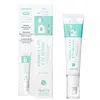What's inside
What's inside
 Key Ingredients
Key Ingredients

 Benefits
Benefits

 Concerns
Concerns

No concerns
 Ingredients Side-by-side
Ingredients Side-by-side

Water
Skin ConditioningGlycerin
HumectantPropylene Glycol
HumectantHydrogenated Polydecene
EmollientCetyl Ethylhexanoate
EmollientCetearyl Olivate
Phenoxyethanol
PreservativeSorbitan Olivate
EmulsifyingHydroxyethyl Acrylate/Sodium Acryloyldimethyl Taurate Copolymer
Emulsion StabilisingDimethicone
EmollientAllantoin
Skin ConditioningParfum
MaskingEthylhexylglycerin
Skin ConditioningPolysorbate 60
EmulsifyingSorbitan Isostearate
EmulsifyingDisodium EDTA
Ceramide NP
Skin ConditioningRetinyl Palmitate
Skin ConditioningArachis Hypogaea Oil
Skin ConditioningButylene Glycol
Humectant1,2-Hexanediol
Skin ConditioningTocopherol
AntioxidantSodium Hyaluronate
HumectantWater, Glycerin, Propylene Glycol, Hydrogenated Polydecene, Cetyl Ethylhexanoate, Cetearyl Olivate, Phenoxyethanol, Sorbitan Olivate, Hydroxyethyl Acrylate/Sodium Acryloyldimethyl Taurate Copolymer, Dimethicone, Allantoin, Parfum, Ethylhexylglycerin, Polysorbate 60, Sorbitan Isostearate, Disodium EDTA, Ceramide NP, Retinyl Palmitate, Arachis Hypogaea Oil, Butylene Glycol, 1,2-Hexanediol, Tocopherol, Sodium Hyaluronate
Water
Skin ConditioningNiacinamide
SmoothingSqualane
EmollientGlycerin
HumectantCetyl Ethylhexanoate
EmollientSodium Acrylates Copolymer
Phenoxyethanol
PreservativeCaffeine
Skin ConditioningTetrahexyldecyl Ascorbate
AntioxidantLecithin
EmollientSynthetic Fluorphlogopite
Polyglyceryl-3 Laurate
EmulsifyingPullulan
Ethylhexylglycerin
Skin ConditioningHippophae Rhamnoides Fruit Oil
Skin ProtectingSodium Gluconate
Skin ConditioningMethyl Glucose Sesquistearate
EmollientCaprylyl Glycol
EmollientTin Oxide
AbrasiveAcetyl Hexapeptide-8
HumectantAcetyl Tetrapeptide-5
HumectantCI 77891
Cosmetic ColorantWater, Niacinamide, Squalane, Glycerin, Cetyl Ethylhexanoate, Sodium Acrylates Copolymer, Phenoxyethanol, Caffeine, Tetrahexyldecyl Ascorbate, Lecithin, Synthetic Fluorphlogopite, Polyglyceryl-3 Laurate, Pullulan, Ethylhexylglycerin, Hippophae Rhamnoides Fruit Oil, Sodium Gluconate, Methyl Glucose Sesquistearate, Caprylyl Glycol, Tin Oxide, Acetyl Hexapeptide-8, Acetyl Tetrapeptide-5, CI 77891
Ingredients Explained
These ingredients are found in both products.
Ingredients higher up in an ingredient list are typically present in a larger amount.
Cetyl Ethylhexanoate is an emollient ester. It comes from cetearyl alcohol and 2-ethylhexanoic acid.
Cetyl Ethylhexanoate is an emollient that adds a velvety feel to skin without being greasy or oily. Emollients help trap moisture into your skin, keeping your skin soft and hydrated.
Ethylhexylglycerin (we can't pronounce this either) is commonly used as a preservative and skin softener. It is derived from glyceryl.
You might see Ethylhexylglycerin often paired with other preservatives such as phenoxyethanol. Ethylhexylglycerin has been found to increase the effectiveness of these other preservatives.
Glycerin is already naturally found in your skin. It helps moisturize and protect your skin.
A study from 2016 found glycerin to be more effective as a humectant than AHAs and hyaluronic acid.
As a humectant, it helps the skin stay hydrated by pulling moisture to your skin. The low molecular weight of glycerin allows it to pull moisture into the deeper layers of your skin.
Hydrated skin improves your skin barrier; Your skin barrier helps protect against irritants and bacteria.
Glycerin has also been found to have antimicrobial and antiviral properties. Due to these properties, glycerin is often used in wound and burn treatments.
In cosmetics, glycerin is usually derived from plants such as soybean or palm. However, it can also be sourced from animals, such as tallow or animal fat.
This ingredient is organic, colorless, odorless, and non-toxic.
Glycerin is the name for this ingredient in American English. British English uses Glycerol/Glycerine.
Learn more about GlycerinPhenoxyethanol is a preservative that has germicide, antimicrobial, and aromatic properties. Studies show that phenoxyethanol can prevent microbial growth. By itself, it has a scent that is similar to that of a rose.
It's often used in formulations along with Caprylyl Glycol to preserve the shelf life of products.
Water. It's the most common cosmetic ingredient of all. You'll usually see it at the top of ingredient lists, meaning that it makes up the largest part of the product.
So why is it so popular? Water most often acts as a solvent - this means that it helps dissolve other ingredients into the formulation.
You'll also recognize water as that liquid we all need to stay alive. If you see this, drink a glass of water. Stay hydrated!
Learn more about Water